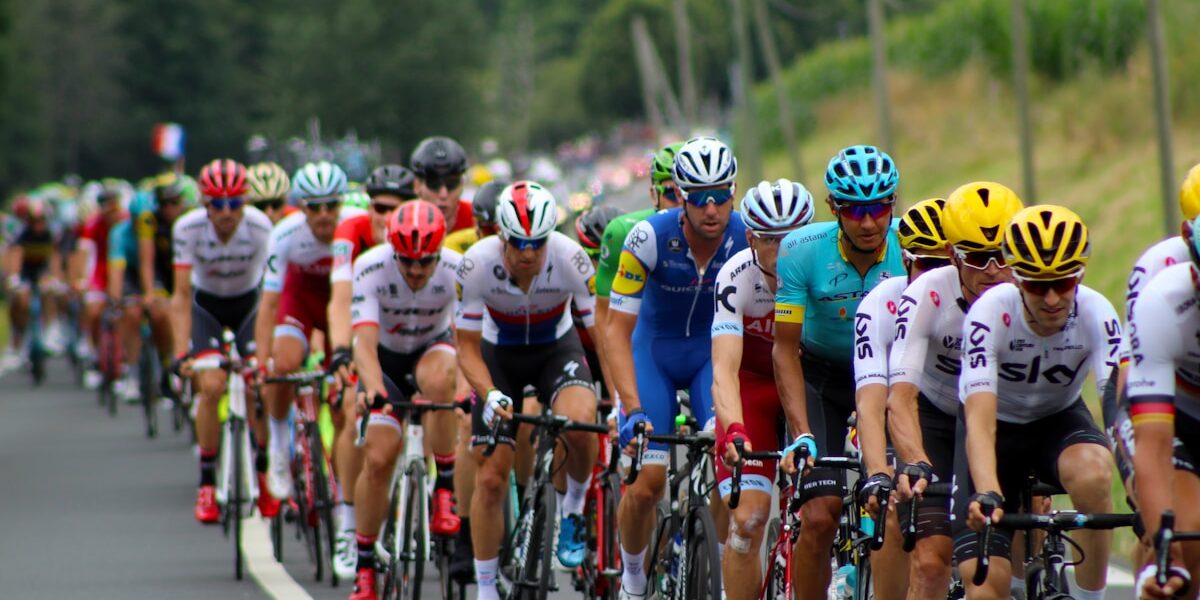Types of Cycles
Types of Cycles
A cycle, at its core, is something that repeats in a circular fashion. While the word cycle might first make you think of a bicycle, cycles actually manifest in many aspects of life and nature. Let’s explore various cycles, understanding their mechanics and significance in different fields.
Biological Cycles
Circadian Rhythms
Circadian rhythms are 24-hour cycles in the physiological processes of living beings. They’re influenced by external cues like sunlight and temperature. In humans, these rhythms regulate sleep, feeding, and hormone production.
Menstrual Cycle
This is a monthly cycle that prepares the female body for pregnancy. It involves hormonal changes and has typically four phases: menstrual, follicular, ovulation, and luteal. Each phase has distinct physiological and sometimes emotional effects.
Carbon Cycle
The carbon cycle describes how carbon moves through the Earth’s ecosystems. It involves processes like photosynthesis, respiration, and decomposition. This cycle plays a crucial role in regulating Earth’s climate.
Nitrogen Cycle
The nitrogen cycle involves the transformation and movement of nitrogen in various forms through the atmosphere, hydrosphere, lithosphere, and biosphere. It’s vital for forming amino acids and nucleic acids, fundamental components of life.
Life Cycles
Human Life Cycle
The human life cycle includes stages from birth to death. Infancy, childhood, adolescence, adulthood, and old age. Each stage has its developmental milestones and challenges. Understanding these helps in personal growth and healthcare planning.
Plant Life Cycle
Plants follow a life cycle that includes seed, germination, growth, reproduction, and death. This cycle varies between species. A notable process is photosynthesis, crucial for plant growth and oxygen production on Earth.
Environmental Cycles
Water Cycle
The water cycle describes the continuous movement of water on, above, and below the surface of the Earth. It involves evaporation, condensation, precipitation, and collection. This cycle is essential for distributing water resources across the planet.
Rock Cycle
This cycle explains how rocks change from one form to another over time. It includes the formation of sedimentary, metamorphic, and igneous rocks. Processes like weathering, melting, cooling, and pressing play key roles in this cycle.
Economic Cycles
Business Cycle
The business cycle refers to the fluctuations in economic activity over time. It includes four phases: expansion, peak, contraction, and trough. Understanding this cycle helps in making informed investment and policy decisions.
Supply Chain Cycle
The supply chain cycle encompasses the steps in producing and distributing products. It includes sourcing raw materials, manufacturing, transportation, and delivery. Efficiency in this cycle is crucial for business success.
Agricultural Cycles
Crop Cycle
Crop cycles involve the yearly or seasonal patterns of planting, growing, and harvesting crops. Factors influencing these cycles include climate, soil conditions, and crop types. Proper management leads to higher yields and sustainable farming.
Livestock Cycle
This cycle covers the breeding and rearing of animals for food production. It includes birth, growth, reproduction, and slaughter. Awareness of this cycle helps in maintaining healthy livestock and optimizing production.
Technological Cycles
Product Development Cycle
The product development cycle involves the stages from idea conception to product launch. It includes research, design, prototyping, testing, and commercialization. Effective cycle management leads to successful product rollouts.
Software Development Life Cycle (SDLC)
SDLC is a framework for developing software applications. Stages include planning, analysis, design, implementation, testing, deployment, and maintenance. Adhering to a robust SDLC ensures quality and timely software delivery.
Geological Cycles
Plate Tectonic Cycle
This cycle describes the movement of Earth’s lithospheric plates. Processes include plate formation at ocean ridges and destruction at subduction zones. This cycle is responsible for phenomena like earthquakes, volcanic activity, and mountain building.
Erosion Cycle
Erosion cycles involve the wearing away of Earth’s surface by wind, water, or ice. Key stages include weathering, transportation, and deposition. These cycles shape landscapes and contribute to soil formation.
Climatic Cycles
Seasonal Cycle
The seasonal cycle consists of predictable changes in weather patterns and daylight hours. These changes, linked to Earth’s axial tilt and orbit around the Sun, influence agricultural activities, lifestyles, and ecosystems.
El Niño and La Niña
These climatic cycles represent patterns of variation in ocean temperatures in the Equatorial Pacific. El Niño involves warming and often causes global weather disruptions. La Niña involves cooling and can result in significant regional climate variations. Both impact global weather, agricultural yields, and marine ecosystems.
Historical Cycles
Dynastic Cycle
The dynastic cycle pertains to patterns of rise, stability, and fall of dynasties. Prevalent in studies of Chinese history, this cycle reflects socio-political dynamics and influences governance structures.
Economic Kondratiev Waves
These are long-term economic cycles believed to be driven by technological innovations. They typically span 40 to 60 years with phases of economic growth and decline. Understanding these waves can aid in long-term economic planning and investments.
Personal and Social Cycles
Sleep Cycle
Sleep cycles consist of patterns of alternating between light (REM) and deep (non-REM) sleep. A typical cycle lasts about 90 minutes and understanding this can improve sleep quality and overall health.
Habit Formation Cycle
This cycle illustrates the process of forming new habits. It generally follows phases of cue, routine, and reward. Recognizing these phases helps in cultivating positive habits and breaking negative ones.
Transportation Cycles
Bicycles
Bicycles are human-powered cycles used globally for transportation, sports, and recreation. Key types include road bikes, mountain bikes, and hybrid bikes. Each designed for specific terrains and uses.
Motorcycles
Motorcycles are motor-powered cycles suitable for both commuting and leisure riding. Major types include cruisers, sport bikes, and dirt bikes. They vary in design, speed, and functionality.
Electric Bicycles (E-Bikes)
Electric bicycles combine human power with an electric motor. Growing in popularity for their eco-friendliness and efficiency. Variants include pedal-assist and throttle-controlled models, catering to different rider preferences.
Mechanical Engineering Cycles
Otto Cycle
The Otto cycle describes the functioning of a typical internal combustion engine. It involves intake, compression, combustion, and exhaust phases. Essential for understanding car engines and related technologies.
Rankine Cycle
This cycle represents the operation of steam engines. Involves processes such as boiling, expanding, condensing, and pumping. Vital for the functioning of electric power generation systems.
Refrigeration Cycle
The refrigeration cycle involves processes of evaporation, compression, condensation, and expansion. Critical for the operation of air conditioning and refrigeration units, ensuring efficient cooling.
Market Cycles
Bull and Bear Markets
These cycles represent phases of rising (bull) and falling (bear) financial markets. Understanding these cycles helps investors make informed decisions on buying and selling assets.
Real Estate Market Cycle
This cycle includes phases of recovery, expansion, hyper-supply, and recession. Influenced by factors like interest rates, economic conditions, and demographic trends. Key for real estate investments and planning.



Subscribe for Updates
Get the latest articles delivered to your inbox.
We respect your privacy. Unsubscribe anytime.